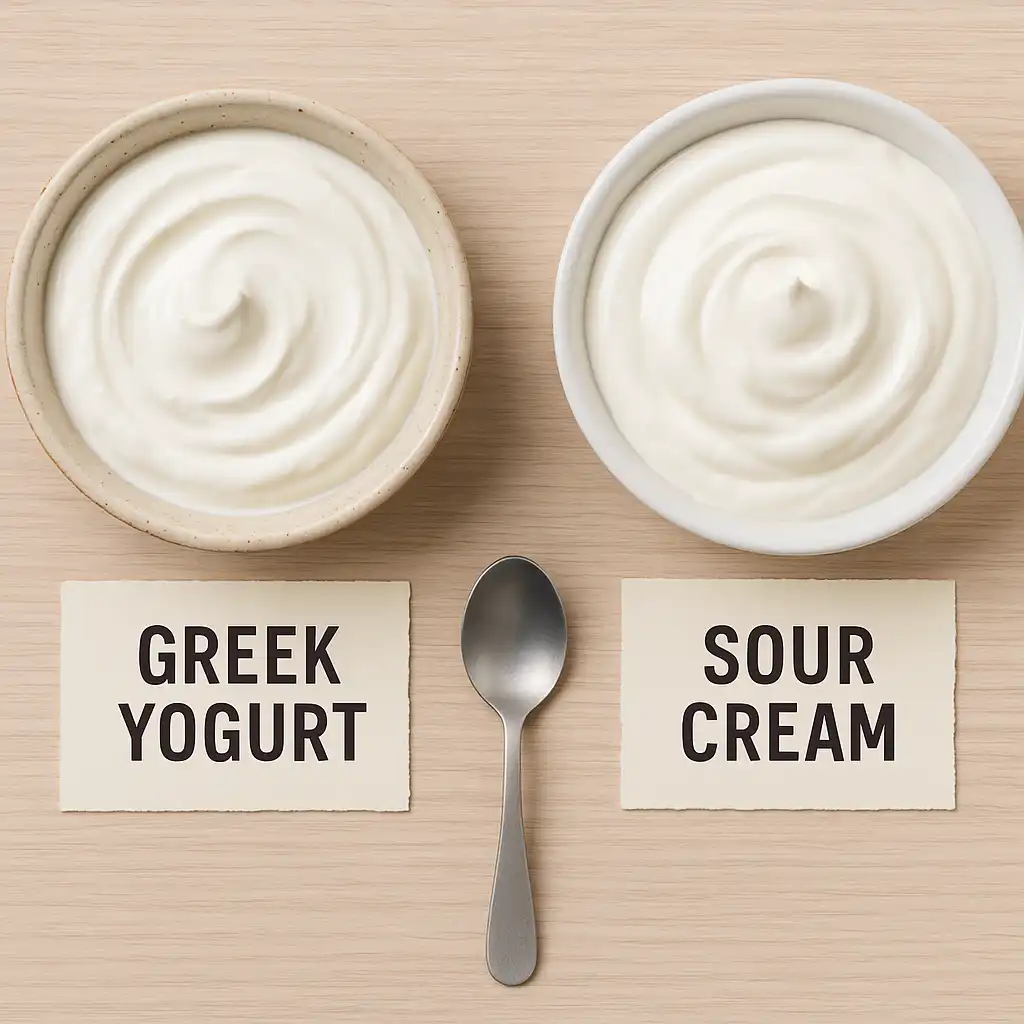Greek Yogurt vs Sour Cream Calories: Which One Fits Your Diet Best?
When you’re trying to make healthier choices in your diet, the little swaps matter. One of the most debated choices in the kitchen is between Greek yogurt and sour cream. They look similar, taste creamy, and can be used in many of the same dishes — but what about the calorie count? If you’re counting calories or trying to eat cleaner, understanding the differences is key.
Calorie Comparison: Greek Yogurt vs Sour Cream
At first glance, both Greek yogurt and sour cream may seem interchangeable, but their nutritional profiles reveal important differences. A typical serving size — about two tablespoons — helps make the calorie comparison clearer:
- Full-fat sour cream contains approximately 60 calories per two tablespoons
- Full-fat Greek yogurt clocks in at around 35–40 calories for the same amount
The difference becomes more pronounced when comparing larger servings. For instance, a full cup of sour cream can exceed 450 calories, while a cup of Greek yogurt may range from 100 to 200 calories, depending on the fat content. Clearly, Greek yogurt provides a lighter option when calories are your main concern.
What About Protein and Fat?
Calories aside, Greek yogurt is well-known for its high protein content. A single serving often delivers twice the protein of sour cream, which makes it a favorite among those looking to stay full longer or build muscle. Greek yogurt also has a thicker texture and tangier taste, which many people enjoy as a sour cream substitute.
Sour cream, on the other hand, is higher in fat, especially saturated fat. While fat isn’t inherently bad, overconsumption of saturated fats has been linked to cardiovascular concerns. Choosing Greek yogurt over sour cream can significantly cut down on fat intake while boosting your protein consumption.
Taste and Culinary Use
Sour cream has a smooth, rich flavor that makes it ideal for topping baked potatoes, tacos, and soups. Greek yogurt offers a similar texture and tang, though slightly more tart. When used in dips, dressings, or even baking, most people can’t tell the difference — especially if you use full-fat Greek yogurt.
If you’re adapting recipes, Greek yogurt works as a one-to-one substitute for sour cream in most cases. It’s especially useful in health-conscious cooking, as it adds creaminess without all the extra calories and fat.
Choosing the Right Option for Your Diet
If your main focus is calorie reduction, Greek yogurt is the clear winner. It not only saves calories but also adds valuable protein to your meal. If taste and indulgence are your priorities, you might prefer the richer profile of sour cream—just be mindful of portion sizes.
For a middle ground, try low-fat Greek yogurt or even a mix of both ingredients in your recipes. That way, you can enjoy the creamy taste with fewer calories.
Conclusion
When it comes to Greek yogurt vs sour cream calories, Greek yogurt edges ahead as the healthier, lower-calorie choice. With fewer calories, more protein, and versatile usage, it fits seamlessly into many meal plans. But if you’re craving a rich topping now and then, sour cream can still have a place — in moderation.






